 |
| Indigenous protestors in Ecuador, November, 2013. Photo credit Chevron's Dirty Hand Campaign; all rights reserved. |
On several occasions over the last few weeks, I've had to make last-minute revisions to accommodate developing stories. The result is that stories sometimes get bumped for a week or more. Last week, I realized that we were reaching a critical mass of stories addressing environmental issues affecting American Indians, and so I elected to hold some of them for this week for an edition dedicated exclusively to such topics.
Yes, there's a great deal of new and important Indian news out there, not least of which are last week's [as of this posting, last September's] developments in the Baby Veronica story. But with our news, each story deserves to be covered in a manner that addresses the issues properly within their cultural and historical contexts — accuracy is often better served by a short delay that permits proper coverage than by trying to be first out of the gate with a given story. We'll get to them, never fear. But this week, the stories that are ripe for covering are environmental ones. And while this week's edition is, as a result, unusually lengthy, it is by no means comprehensive. There are many more environmental issues in Indian Country that have yet to be covered, and they will be.
Over the last few years, I've written an intermittent series of diaries under the title Scars Upon Sacred Land. They're diaries that focus on environmental issues in Indian Country. Some focus on infliction of new scars on the body of Mother Earth; others, upon attempts to prevent them; and still others, upon rehabilitation and reclamation afterward.
This week's edition explores the latest in scars upon sacred land.
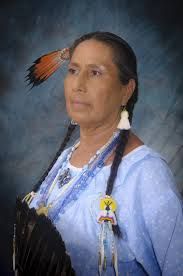 Environmental and American Indian rights activist Casey Camp-Horinek [Ponca] was chosen as one of 100 women delegates worldwide to attend the International Women's Earth and Climate Initiative [IWECI] Summit in New York City from September 20th through 23rd.
Environmental and American Indian rights activist Casey Camp-Horinek [Ponca] was chosen as one of 100 women delegates worldwide to attend the International Women's Earth and Climate Initiative [IWECI] Summit in New York City from September 20th through 23rd.Ms. Camp-Horinek is the sister of American Indian Movement [AIM] co-founder Carter Camp, known to Kossacks as cacamp. Earlier this year, I profiled her for this series after navajo first introduced us to her.
As I noted then, she is a warrior woman in every sense of the phrase. An actor and long-time activist, she has spent her life fighting tirelessly for her people and planet. At home, she is the traditional Drumkeeper for the Woman's Scalp Dance Society, known as the Ponca Pa-tha-ta. In 2008, she and her brothers were Indigenous Environmental Network [IEN] delegates to the U.N. Permanent Forum on Indigenous Issues, where she presented IEN's "global platform regarding the environment and Native rights."
She has been relentless — and relentlessly blunt — on the causes and effects of climate change:
"We, of the Ponca Nation, are the survivors of a holocaust. We were forcibly removed from our ancestral lands in the Nebraska and South Dakota Regions, the lands that the Creator had placed us upon, to what is Oklahoma in 1877. Today we are immersed in an intensifying form of Environmental Genocide. The Extractive Industry, specifically Fossil Fuel extraction and refining, has impacted our present day homeland in an irreparable way. The steady degradation of Air, Water, and Earth has affected the Ponca People as potently as the small pox infected blankets did in the 1800’s. We feel that the Sacred Covenant of Humanity, living in respect and balance with All Living Things, has been defiled by the commodification of our 'Natural Resources.' Each person must ask themselves, 'What will we leave for the generations to follow?'"And who better to ask these questions, and find the path to solutions, than indigenous womenom around the world?
The purpose of the IWECI Summit was to draft a Women's Climate Action Agenda, in part to help leverage action on the report of the Intergovernmental Panel on Climate Change [IPCC], which was issued last week. Summit co-founder Osprey Orielle Lake called women "uniquely positioned" to implement action on climate change, adding:
"Nature will not wait while politicians debate. Women around the world are facing the impacts of a changing climate every day, and we are coming together to say 'enough is enough' and it is time for action that addresses the roots of this crisis and fosters just solutions."The respect the IWECI Summit organizers have for Ms. Camp-Horinek is evident in the roles they asked her to fill. As her other brother, Dwain Camp, noted in a piece written for Native American Times, she was asked both to open Saturday's session with a morning prayer, and to perform a "Closing Water Ceremony" at the closure of the Summit itself on Monday.
Few, if any, standard-bearers for the IPCC report and call to action are likely to be more effective than Casey Camp-Horinek and her fellow indigenous women activists.
U.S. DENIES VISAS TO ECUADOREAN OFFICIALS
FOR TRIP TO U.N.
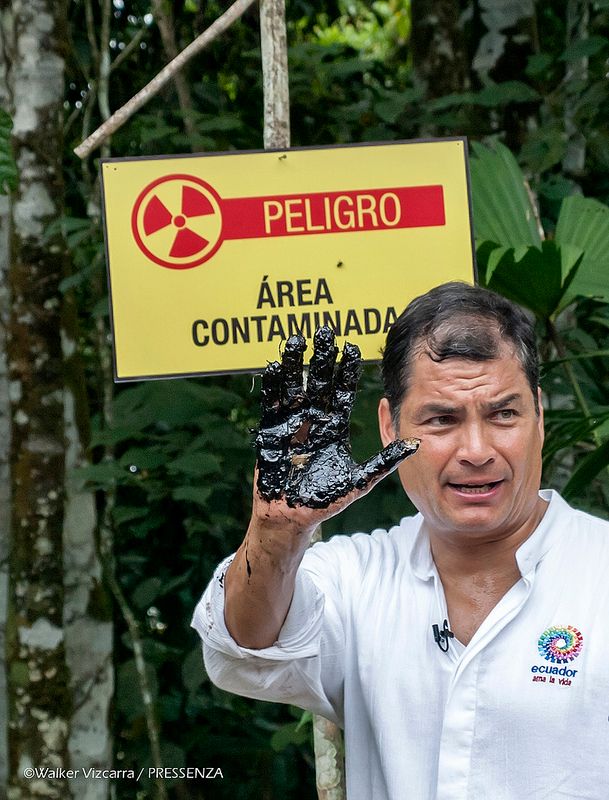 On September 20th, the State Department denied visas to a delegation of indigenous Ecuadorean citizens slated to speak before the U.N. General Assembly. Reportedly, their presentation would have covered the country's two-decade legal battle against Chevron-Texaco over the corporation's massive environmental destruction of large swaths of the Amazon rainforest.
On September 20th, the State Department denied visas to a delegation of indigenous Ecuadorean citizens slated to speak before the U.N. General Assembly. Reportedly, their presentation would have covered the country's two-decade legal battle against Chevron-Texaco over the corporation's massive environmental destruction of large swaths of the Amazon rainforest.The visas were reportedly denied with no explanation, but Ecuadorean officials speculate that the topic of their presentation provides the motive.
That group was to present testimony during a special event at the UN regarding the ecological impact caused by Chevron-Texaco’s oil operations in the Amazon rainforest region of Ecuador - which contaminated two million hectares, according to the country’s government.
At stake in the case is a US$19 billion judgment awarded by an Ecuadorean court against Chevron for cleanup and ecological damage, which is currently being fought at The Hague.Indigenous Ecuadoreans have been battling Chevron-Texaco for two decades or more, as the multinational corporation and its extractive practices have destroyed the peoples' ancestral lands, including sacred lands, and despoiled the once-pristine Amazon rainforest environment in virtually irrecoverable ways. Represented by a group of American attorneys, they first filed suit against Texaco in 1993 in federal district court in New York. Eight years later, with the litigation still ongoing, Chevron acquired Texaco, leading to the company's name change. In 2003, the plaintiffs re-filed their claims in the Ecuadorean court. They finally won a decisive legal victory eight years later, in early 2011, when the Ecuadorean court issued the $19 billion judgement against Chevron-Texaco.
That case faced a setback on Tuesday when an interim ruling in favor of Texaco Corp., later acquired by Chevron, found that a 1995 agreement absolved the company from claims of "collective damage" [emphasis in original].
By then, however, Chevron-Texaco had divested itself of all holdings in Ecuador, leaving the plaintiffs to try to recover through the company's holdings in other countries. In the meantime, citing the 1995 clean-up agreement, Chevron has strenuously attempted to deflect all blame onto its local "partner," the country's national oil company, Petroecuador.
Chevron's counsel, Hewitt Pate, has publicly characterized the indigenous peoples' lawsuit as "fraudulent claims" that "should not have been brought in the first place." The company petitioned the Permanent Court of Arbitration at The Hague to intervene in the case, and it is that body that issued last week's interim ruling in the company's favor.
Ecuadorean President Rafael Correa remains undeterred.
“We will expose to the world Chevron's multimillion dollar campaign to discredit this country. It is a campaign that involves taking away preferential tariffs, boycotting international trade with the United States," said President Correa.He has labeled that campaign "Chevron's Dirty Hand," the source of the image above. The campaign calls for an international boycott of all Chevron products as long as it refuses to pay the $19-billion damage award. The images and story have already gone viral on social media internationally.
Meanwhile, all parties await a final decision. If the damage award is ultimately upheld, it will be the second-largest environmental damage award in history, second only to the judgment against British Petroleum resulting in the $20 million compensatory fund for victims of its oil spill in the Gulf of Mexico.
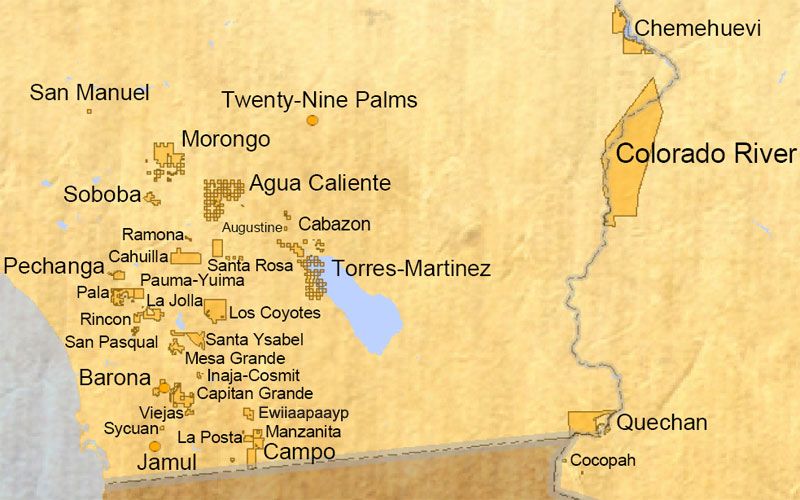 A new long-term study of Native American men and women from various states shows that even low levels of arsenic contamination are linked to serious adverse health consequences.
A new long-term study of Native American men and women from various states shows that even low levels of arsenic contamination are linked to serious adverse health consequences.The study, published on September 24th in the Annals of Internal Medicine, sought to determine whether the low- to mid-range arsenic levels commonly found in drinking water and food in many parts of the country presented significant health risks. Earlier studies measuring the effects of high levels of arsenic, of course, have consistently shown serious adverse health effects, including coronary heart disease, peripheral artery disease, stroke, and other forms of cardiovascular disease. And while researchers say that the results of the new study do not establish a definitive cause-and-effect relationship, they do establish a correlation.
The study, of nearly 3,600 Native American men and women across four states, was launched in 1989 and continued through 2008, and controlled for external factors like cholesterol levels, obesity, and smoking. The four states (Arizona, North Dakota, Oklahoma, and South Dakota) were chosen because of the presence of high arsenic levels — in various food crops in Oklahoma, and in the groundwater in Arizona and the Dakotas.
Of the participants, nearly 450 died of cardiovascular disease and almost 1,200 developed either fatal or nonfatal cardiovascular disease. Researchers found that a person's risk of death from cardiovascular disease increased with their arsenic exposure.The study comes at an especially timely moment for the Torres Martinez Desert Band of Cahuilla Indians, where the owners of a trailer park on the reservation have been ordered by the EPA to remedy arsenic contamination in the park's water supply.
The one-quarter of patients who showed the highest levels of arsenic in their urine had about a 50 percent increased risk of death by heart attack or stroke compared to those with the lowest levels of arsenic, [study author Dr. Ana] Navas-Acien said.
Arsenic exposure also was associated with an increased risk of developing cardiovascular disease.
Sampling at D&D Mobile Home Park showed arsenic at concentrations as high as 0.059 milligrams per liter, almost six times the EPA’s maximum contamination level. Testing also showed the presence of coliform bacteria.In addition to the cardiovascular diseases explored in the recent study, arsenic poisoning can also cause several forms of cancer, gastrointestinal diseases, neurological conditions, blindness, and even paralysis.
The park's owners have 90 days from the date of the citation to submit a written plan to the EPA for reducing the arsenic to a level within federal standards, a goal that must be accomplished by December 31, 2014. Penalties for noncompliance may include fines of up to $37,500 per day. As of this writing, no information is available on whether the owners of the trailer park are tribal members or outsiders.
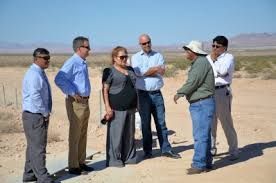 Last month, New York-based K Road Power signed a contract with Moapa Energy, a consortium whose majority owners are the Moapa Band of Paiute Indians, to build the country's first "utility-scale" photovoltaic [PV] solar power plant based on reservation lands. The project flows from efforts across two federal departments: In 2012, the Department of the Interior signed off on the Moapa Solar Project, a 250-megawatt plant comprising half "concentrating solar" and half solar PV energy; this year, the tribe has expanded that first foray into renewable energy into the current project, with assistance from the Department of Energy's Tribal Energy Program.
Last month, New York-based K Road Power signed a contract with Moapa Energy, a consortium whose majority owners are the Moapa Band of Paiute Indians, to build the country's first "utility-scale" photovoltaic [PV] solar power plant based on reservation lands. The project flows from efforts across two federal departments: In 2012, the Department of the Interior signed off on the Moapa Solar Project, a 250-megawatt plant comprising half "concentrating solar" and half solar PV energy; this year, the tribe has expanded that first foray into renewable energy into the current project, with assistance from the Department of Energy's Tribal Energy Program."Generating clean, emissions-free solar power on our reservation has long been a goal of the Moapa people, and is true to our heritage of environmental consciousness, respect for the Earth and reverence of our sacred lands," says Eric Lee, vice chair, Moapa Band of Paiutes. "We are thrilled to be working with Herbst Energy and Stronghold Engineering to bring this ground-breaking partnership to fruition at a time when the nearby Reid-Gardner coal plant is being decommissioned." [See next story for details on the Reid-Gardner plant.]The new project is also a 25-megawatt plant, serving 100,000 households. However, the tribe envisions expansion into new projects totaling up to 1.5 gigawatts, and plans to sell the excess energy that the projects generate to utility companies throughout the Southwestern U.S. According to reports:
K Road Power is leasing the land for 50 years and the electricity will be sold to Los Angeles District of Water and Power under a 25-year power purchase agreement. It is K Road's biggest project to date and one of the biggest in the world.Four days ago, K Road Power sold its interest in the project to First Solar. According to First Solar, construction remains slated to begin in the final quarter of this year, with completion projected by the end of 2015.
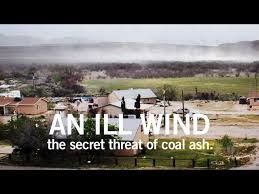 The Moapa Band of Paiute Indians is partnering with the Sierra Club to pressure the Nevada Public Utilities Commission [PUC] and NV Energy to complete the process of decommissioning the Reid-Gardner coal plant.
The Moapa Band of Paiute Indians is partnering with the Sierra Club to pressure the Nevada Public Utilities Commission [PUC] and NV Energy to complete the process of decommissioning the Reid-Gardner coal plant.In June, Nevada Governor Brian Sandoval (R) signed into law SB123, which provided for the complete decommissioning of the Reid-Gardner plant after years of environmental contamination and degradation resulting from its operations. Plant owner NV Energy had agreed to the full shutdown, and the terms of that agreement were codified in the law.
Now, however, NV Energy appears to want to have it both ways: delaying closure of Units 1, 2, and 3 past 2014; and rather than shutting down Unit 4, selling it — presumably to a buyer whose interest in it would naturally be in profiting from its continued operation.
"Anything less than full retirement of all of the coal plant’s four boilers is simply unacceptable," said Vickie Simmons, a leader of the Moapa Band of Paiutes' health and environmental committees. "We can’t allow NV Energy to shirk responsibility for retiring this plant that has for decades polluted our air, our water and our land, severely damaging our families' livelihoods in the process."The coal plant abuts the Moapa Reservation, and some tribal members' homes are a scant few hundred yards from the plant itself. The tribe and the Sierra Club have filed a lawsuit in federal district court to force NV Energy, which is currently undergoing acquisition by MidAmerican Energy, to clean up the contaminated lands and watersheds in the area. People close to the dispute speculate that MidAmerican wants to convert part of the old plant to natural gas and continue operations. The tribe, meanwhile, insists that nothing less than full closure and complete remediation will do, and is instead urging the company to follow the tribe's own lead by converting entirely to renewable energy sources.
The tribe has concerns about air pollution and coal ash dust contamination from the plant. Coal ash contains high levels of toxins including mercury, arsenic, chromium and lead.
Soil and groundwater contamination at the site exceeds federal standards for toxic pollutants including arsenic, selenium and manganese. Wells monitoring groundwater quality show contanimation between 2008 and 2012 has consistently exceeded state standards.
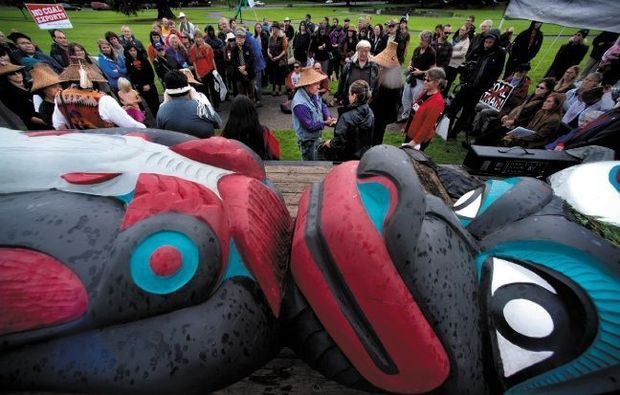 Earlier this month, Lummi Nation master carver Jewell Praying Wolf James took a ceremonial totem pole that he created on a journey: 1,200 miles from his home on Puget Sound to Montana for a blessing ceremony, and another 1,700 miles back again to coastal Olympia.
Earlier this month, Lummi Nation master carver Jewell Praying Wolf James took a ceremonial totem pole that he created on a journey: 1,200 miles from his home on Puget Sound to Montana for a blessing ceremony, and another 1,700 miles back again to coastal Olympia.The Lummi brought with them a 22-foot totem pole hand carved from a 300-year-old Western red cedar tree so that Medicine Bull could offer it as a blessing. The Lummi people have created a tradition of carving and delivering totem poles to areas struck by disaster or otherwise in need of hope and healing.
The Lummi, like the Northern Cheyenne, are fighting for the future of their homelands against coal mining and its likely export to China. The totem pole, known as a healing totem, began its spiritual journey Wednesday here. It's the first stop on a Pacific Northwest trek to North Vancouver, British Columbia, where it eventually will stand as a cross-border symbol of spiritual solidarity in the fight against industrial resource extraction of coal and oil sands.Arch Coal, based in St. Louis, Missouri, recently purchased mining leases in the Otter Creek area. If mining operations commence, they and their delivery routes will traverse lands that are a sacred and integral part of the Northern Cheyenne people's ancient history, leading the tribe to oppose any such development. The Lummi made the decision to take a public stand in solidarity with the Northern Cheyenne, because the delivery routes are expected to have at least one terminus at Cherry Point, Washington, which is a part of the Lummi Nation's ancestral homelands. Both tribes worry about the possibility of environmental degradation and cultural trespass.
Lummi Nation member and House of Tears carver Romona Charles said the proposed coal export terminal at Cherry Point on the Washington coast, would affect human health, harm fish habitat, and destroy sacred Lummi burial grounds.The Lummi have already been waging a long-term battle against SSA Marine's Gateway Pacific Terminal; they say that its use for coal exports will cause harm to the tribe's fisheries, which are protected by treaty rights. The U.S. Army Corps of Engineers has acknowledged that Lummi objections will "carry some weight" over the course of the permitting process.
"The terminal that they want to build ... is right on top of an ancestral burial site," Charles said. "It was an old village and it's a known grave site. My people are from there. I truly believe that if you allow these white corporations to stomp on one grave, they'll dance on all the rest. There has not been one time I thought, 'Let's go put a coal port at Arlington Cemetery.'"
On Tuesday, representatives from a number of area tribes joined them for the totem pole's arrival in Olympia, as did other Native environmental activists. Mr. James, meanwhile, believes that the national attention the pole is bringing to the issues is good for tribal members' morale, reminding them that they are not alone and giving them a sense of hope.
One more leg of the totem pole's journey remains: Mr. James will escort it to North Vancouver, British Columbia, where, as noted above, the pole will be erected permanently "as a cross-border symbol of spiritual solidarity in the fight against industrial resource extraction of coal and oil sands."
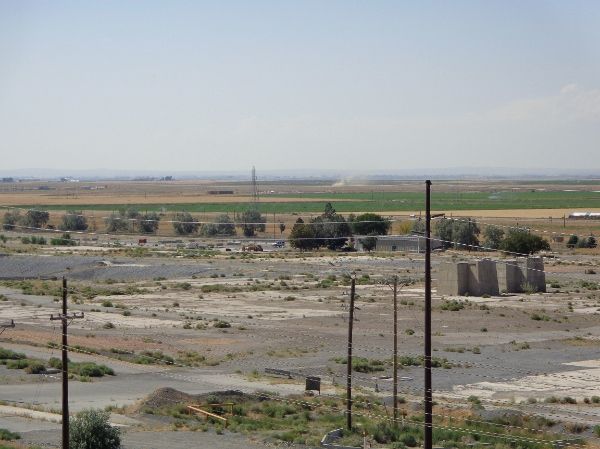 A long-defunct FMC elemental phosphorus plant in southeast Idaho near Pocatello continues to create damaging fallout for the Shoshone-Bannock Tribes of the Fort Hall Indian Reservation, on whose ancestral lands the plant sits.
A long-defunct FMC elemental phosphorus plant in southeast Idaho near Pocatello continues to create damaging fallout for the Shoshone-Bannock Tribes of the Fort Hall Indian Reservation, on whose ancestral lands the plant sits.The plant operated from 1949 to 2001, and at its peak turned two million tons of phosphate ore, coke, and silica annually into a yield of 250 million pounds of elemental phosphorus per year. The end product was usually converted into phosphoric acid, which has a wide array of household, commercial, and industrial uses. It is also extremely toxic.
The FMC plant (and its neighboring J.R. Simplot plant, still in use) have turned 1,500 acres of the Shoshone-Bannock ancestral homelands into a Superfund site.
Documented environmental trouble first arose in 1976, when a well at the now-closed Pilot House Restaurant revealed arsenic contamination and had to be shut down. By the 1980s, the EPA was looking at the FMC and Simplot properties as a potential combined Superfund site, due to unlined waste ponds containing elevated levels of arsenic, phosphorus, cadmium, chloride, chromium, copper, fluoride, lead, potassium, selenium, silica, vanadium – the phosphate ore came as a package deal with every other element in the periodic table, as an FMC scientist says now – and trace amounts of organic solvents. Groundwater monitoring as early as the mid-1970s revealed that multiple constituents had begun leaking off-site, into the ground water.In the 1990s, the Shoshone-Bannock tribes launched an assault on the plants' environmental degradation on multiple fronts: They taxed the mining companies; forced them to hire Indian workers; extracted royalties on the ore; and began building their own environmental regulatory agencies, hiring experts, charging fees for air emissions and solid waste storage, and insisting on publishing their own environmental tracking data alongside the EPA's.
In the end, of course, it was neither federal nor tribal environmental regulations that shuttered the FMC plant, but skyrocketing electricity costs in the face of cheap Chinese imports undercutting corporate profits. Meanwhile, selenium and other contaminants continue to poison air, groundwater, soil, flora, fauna, and human health on the Fort Hall Indian Reservation.
Note: This story comes from the first installment, linked above, of a three-part series on Fort Hall's phosphate contamination by Indian Country Today Media Network Part II and Part III are now also available, as well as a fourth piece placing the problem into a global context.
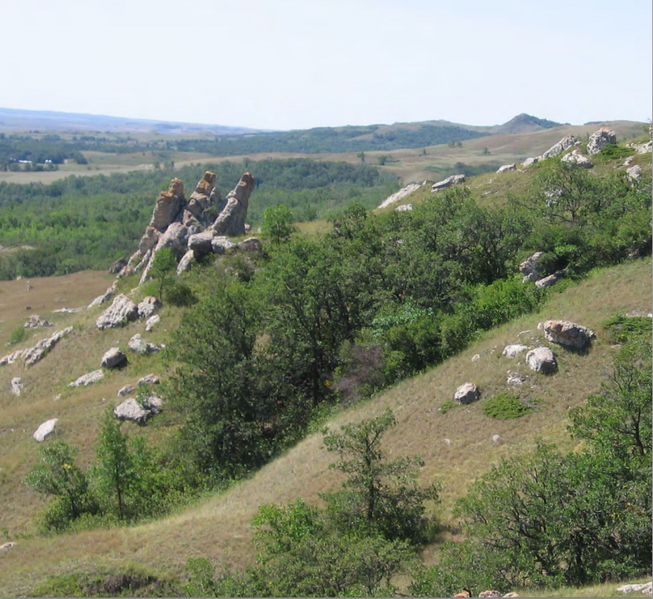 Once again, an energy company seeks to invade sacred lands and despoil a burial site on which Native peoples' ancestors were brutally massacred. This time, it's North Dakota's Killdeer Mountain, or as the people who have lived there since time immemorial call it, Taĥċa Wakutėpi.
Once again, an energy company seeks to invade sacred lands and despoil a burial site on which Native peoples' ancestors were brutally massacred. This time, it's North Dakota's Killdeer Mountain, or as the people who have lived there since time immemorial call it, Taĥċa Wakutėpi.The company in this instance is the Basin Electric Power Cooperative. It wants to run a new transmission line between its Antelope Valley Station and a Tioga substation. The line would run directly through the battlefield — more accurately, the massacre field — that was a bump in the road of Union Brigadier General Alfred Sully's Northwest Expedition. In 1864, Sully and his troops engaged in the wholesale slaughter of Lakota and Dakota, men, women, children, elders, warriors, noncombatants alike. Not satisfied with the massacre of human bodies, they destroyed the people's crops, supplies, and lodges, as well.
Dakota Goodhouse, an enrolled member of the Standing Rock Sioux Tribe, says, "If this was [a different Civil War-related battlefield, such as] Gettysburg or Antietam, the public outcry would be so great there wouldn’t even be a discussion" about energy development.Of course there wouldn't. White American deaths are sacred. Even the deaths of traitors to the United States.
Indian deaths? Not so much.
However, the tribes are getting support from an unexpected quarter:
Goodhouse notes that the National Park Service'[s] American Battlefield Program has just funded a two-year study of the site to determine its eligibility for inclusion in the National Registry of Historic Places. Principal investigator, North Dakota State University Distinguished Professor and founding director of the university’s Center for Heritage Renewal, Tom Isern, says in the center’s submission to the North Dakota Public Service Commission, "The Killdeer Mountain Battlefield, where Dakota and Lakota fighters fought the Northwest Expedition of Brigadier General Alfred Sully, is an exceedingly significant historic site worthy of preservation and respect. Unfortunately, proposals here under review call for a power transmission line to be built across the core of the battlefield. This is an unacceptable denigration of the integrity of the site."Unfortunately, opposition to the tribes will come from a powerful if not at all surprising source: It turns out that the Basin Electric is furiously building power plants across the state to keep up with a huge increase in demand. The transmission line in question is intended to help meet that demand, which emanates from one very specific, very politically powerful source: the energy companies operating in the Bakken Oil Shale Reserve.
Isern told ICTMN that the battlefield is likely the most important historical site in the state and perhaps he had not stated his objections to the transmission line strongly enough.
Apparently not content with assaulting the bodies and spirits of North Dakota's indigenous women in their man camps, now the companies of the Bakken want to assault their ancestors' massacred bones, as well.
It appears that Basin Electric may have tried to pull a fast one. The company's draft environmental impact statement [EIS], a prerequisite for the approval process, conveniently omitted any mention the National Park Service study. It's also unclear whether the company ever formally notified the tribes, which it was required to do; although the draft appears to make a blanket assertion that 14 tribes were so notified, not a single comment or response from a single tribal member is included in the EIS. Company officials likewise say that they might be willing to consider an alternate route, but none of the planning documentation includes so much as a single reference to an alternate route.
Notified or not, the tribes are certainly aware now, though.
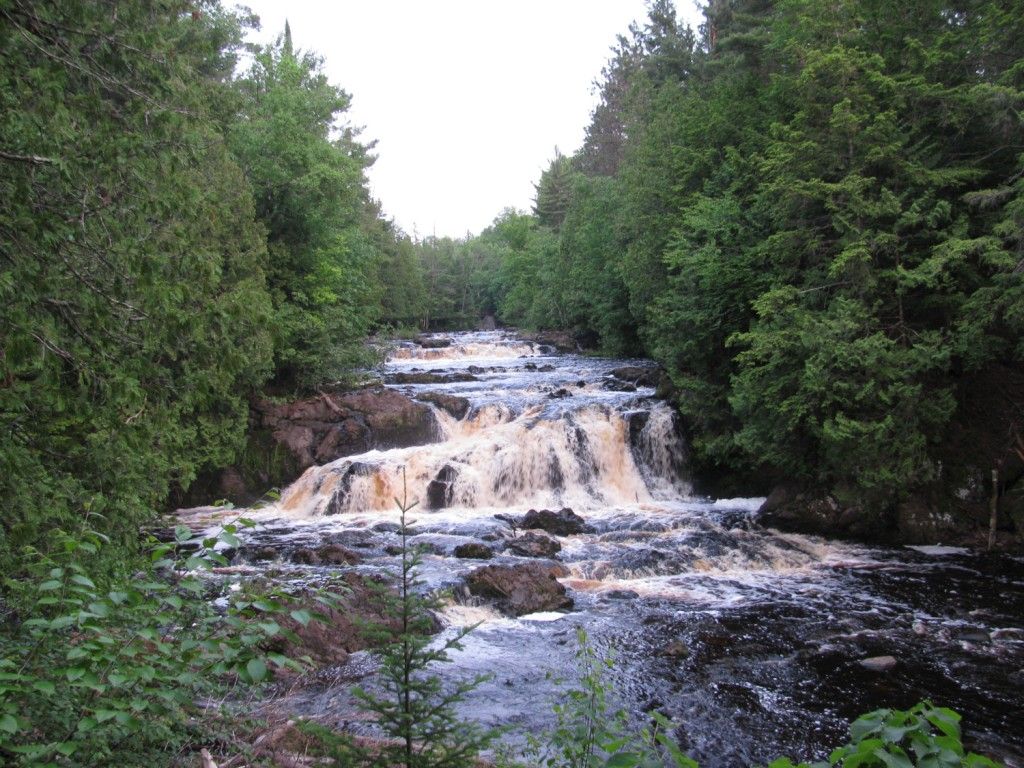 Chris Cline's Gogebic Taconite has been engaged for months in a pitched battle with tribal activists from Wisconsin's Bad River Band of Lake Superior Chippewa Indians and their allies in the environmental movement.
Chris Cline's Gogebic Taconite has been engaged for months in a pitched battle with tribal activists from Wisconsin's Bad River Band of Lake Superior Chippewa Indians and their allies in the environmental movement.The mining company wants to commence iron ore mining operations in an environmentally sensitive area, on lands that abut the Bad River Band's tribal lands. Mining company emissions would pollute the tribe's watershed, ultimately affecting not only the rivers and streams, but the groundwater and the soil, crops, flora, and fauna. Gogebic Taconite, naturally, has powerful friends in Wisconsin's capital, including Governor Scott Walker (R) and Republican members of both houses of the state legislature.
But the Bad River Band have been fighting back since the venture was first announced. I covered their story months ago here.
Now, the company and its political protectors are trying to do an end run around the law.
Gogebic Taconite wants to keep the public — especially protestors — off the land. Unfortunately for Cline and his corporate minions, the land in question is public land, part of Wisconsin's "managed forest program," and absent a buyout, they can't keep the public off it. Someone asked the state's Department of Natural Resources [DNR] to determine what the cost of such a buyout would be, and the DNR e-mailed its results to legislative staffers last week: $891,871 in taxes and penalties. Payment of those property taxes and penalties would permit the company to withdraw from the managed forest program, effectively converting the land to private property. Gogebic Taconite could then keep the public, including tribal protestors, entirely off the land.
The mine itself is a $1.5 billion operation; a one-time tax bill of less than $900,000 isn't even a drop in the proverbial bucket. So why not pay it?
Because the company's friends in the legislature are trying to ensure that it doesn't have to pay. Republican politicians have introduced a bill that would apply only to Gogebic Taconite, and only to the 3,520-acre parcel of land at issue here — as one report says, "specifically written for the mining company" — that would nullify the existing law in two very important ways. Currently, owners of parcels that are part of the managed forest program are legally permitted to close off no more than 160 acres to the public; the remainder, however large, must remain accessible for public activities such as hunting and fishing. Under the proposed legislation, Gogebic Taconite would receive an exclusive exemption permitting it to close off all 3,520 acres, with no penalty. Additionally, it would assess annual property taxes for the entire parcel at a capped rate of $7,604 — an amount that can't even generously be called a fraction of its actual worth.
The company cites alleged "threatened violence" from protestors as the reason why it needs such favors. Violence, I should point out, that has not materialized — except on the part of the company's own goons, a hired paramilitary militia group who have inflicted violence on peaceful tribal and other protestors.
If you're a resident of Wisconsin, go here to find your representatives in the Assembly and here to find your member of the state Senate, and protest this bill. If you live elsewhere, you can contact the Bad River Band of Lake Superior Chippewa Indians here to find out how you can help.
 I've written at some length about Resolution Copper and its ongoing attempt to carve new scars upon the sacred lands of the Arizona tribal nations. I've also written before about Congresswoman Ann Kirkpatrick (D-AZ) and her nasty little McCain-like habit of touting herself as a great friend to the tribes while she simultaneously spits in their collective face and stabs them in the back.
I've written at some length about Resolution Copper and its ongoing attempt to carve new scars upon the sacred lands of the Arizona tribal nations. I've also written before about Congresswoman Ann Kirkpatrick (D-AZ) and her nasty little McCain-like habit of touting herself as a great friend to the tribes while she simultaneously spits in their collective face and stabs them in the back.Well, she's back, and so is Resolution Copper, and with the connivance of Congress, they're out to screw the tribes again.
A bill is making its way through Congress right now that would allow for a land swap to benefit Resolution Copper, a foreign multinational mining conglomerate that has been busily engaged in despoiling and destroying indigenous lands for profit for many years. The company has been trying for a few years now to commence new mining operations in areas of Arizona that are environmentally sensitive (including much-needed watersheds) and that contain lands sacred to local tribal nations. One of the areas they've long wanted to get their hands on is known as Oak Flat, about which I wrote a few years ago.
Under HR687, the land swap would give the company more than 2,400 acres of U.S. Forest Service land, including the contested Oak Flat, in exchange for some 5,300 acres of land currently held by Resolution Copper that Kirkpatrick and her colleagues call "environmentally sensitive." Of course, she introduced a similar bill four years ago that included not only Oak Flat but Apache Leap, whose sacred significance I explained here. now, she wants credit for the fact that Apache Leap has been removed from the current bill — and for people simply to ignore the fact that Oak Flat remains a part of it.
"I’ve been pushing for more tribal consultation and environmental assessments," Kirkpatrick said.Yes, Ann. You've covered your ass. You can say you "spoke with" them. Did you actually listen to them? Or did you invade their personal space again this time, too?
She pointed to the recent removal of the 110-acre Apache Leap area from the deal as an example of her efforts to address tribal concerns.
"This bill is not the same as the one I introduced (in 2009) or the one introduced by Congressman Gosar. There have been changes, and I’m attempting to balance the concerns of everyone involved," Kirkpatrick said.
. . .
"I made a point of making that visit, I wanted to speak with the tribe,” she said. “Doing that town hall was significant."
The San Carlos Apache elders remain unimpressed.
"It’s all about money. What people will do for money is just plain stupid. They don’t think," said tribal elder Gladys Hinton. "As Apaches, we hold true to our tradition and our beliefs, and we are taught not to trust anyone that will take away our land and sell our water. That makes me so sad. That’s why I came today, to continue to stand up for what I believe, and that is to protect the ways of our Apache people and help save our water. That’s ours. It doesn’t belong to nobody else."It's not just the San Carlos Apache who see the risky precedent this land swap bill would set. The California Tribal Business Alliance [CTBA], comprising the Pala Band of Luiseño Indians and the Paskenta Band of Nomlaki Indians of California, has issued a press release vigorously opposing the bill. The CTBA's statement reads, in part:
CTBA recognizes that there are a number of significant fiscal and public policy implications surrounding the legislation. The legislation and ultimate land swap will result in economic stimulus and the extraction and use of valuable ore. However, it does so at a cost. The legislation will also result in the loss of irreplaceable sites sacred to Native Americans. It will remove protections for the environment. Moreover, it does so without engaging the respective tribes in any meaningful government-to-government consultation in regard to their sacred cultural resources or surrounding environment.They're right.
This is in direct conflict with existing policies and laws, such as, the Memorandum of Understanding executed in December 2012 among various departments to coordinate and collaborate with tribal governments for the protection of Indian sacred sites. It also conflicts with the President's Executive Order of June 2013 which establishes a national policy to ensure that the Federal Government engages in meaningful consultation with tribes on any policies affecting tribal nations. Moreover, the legislation establishes timeframes to complete the analysis of any historic or sacred sites in the exchange area that are inconsistent with the requirements of the Native American Graves Protection Act and the National Historic Preservation Act.
So many aggressions, so little time. Dismissiveness of notions of sovereignty and "government-to-government relationships." Violations of NAGPRA and the NHPA. Irreversible environmental damage. And the insulting racism inherent in the entire "process."
Congressman Ben Ray Luján (D-NM) has offered one of three amendments to address some of these problems. The first two failed; his was expected to be considered last week, and would provide greater authority to the Secretary of the Interior, in consultation with affected tribes, to withdraw public lands from such negotiations.
You can help by supporting efforts to pass the Luján Amendment. If you live in Arizona, you can contact Ann Kirkpatrick here and her Republican counterpart, Paul Gosar, here. If you live elsewhere, contact members of your own congressional delegation via this directory.
Copyright Ajijaakwe 2013, 2014; all rights reserved.

No comments :
Post a Comment